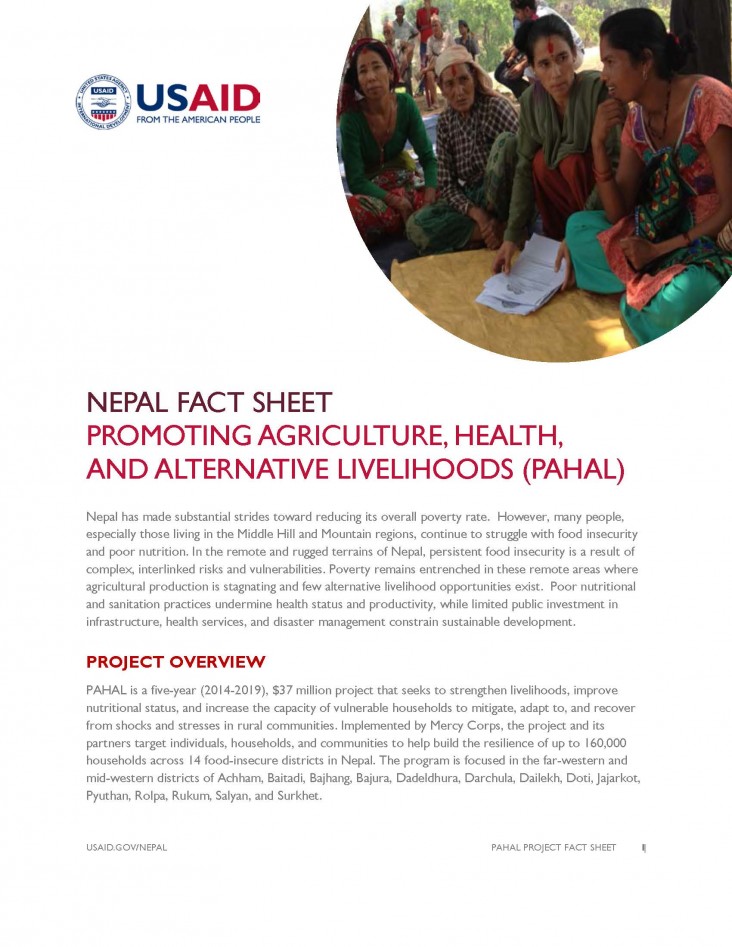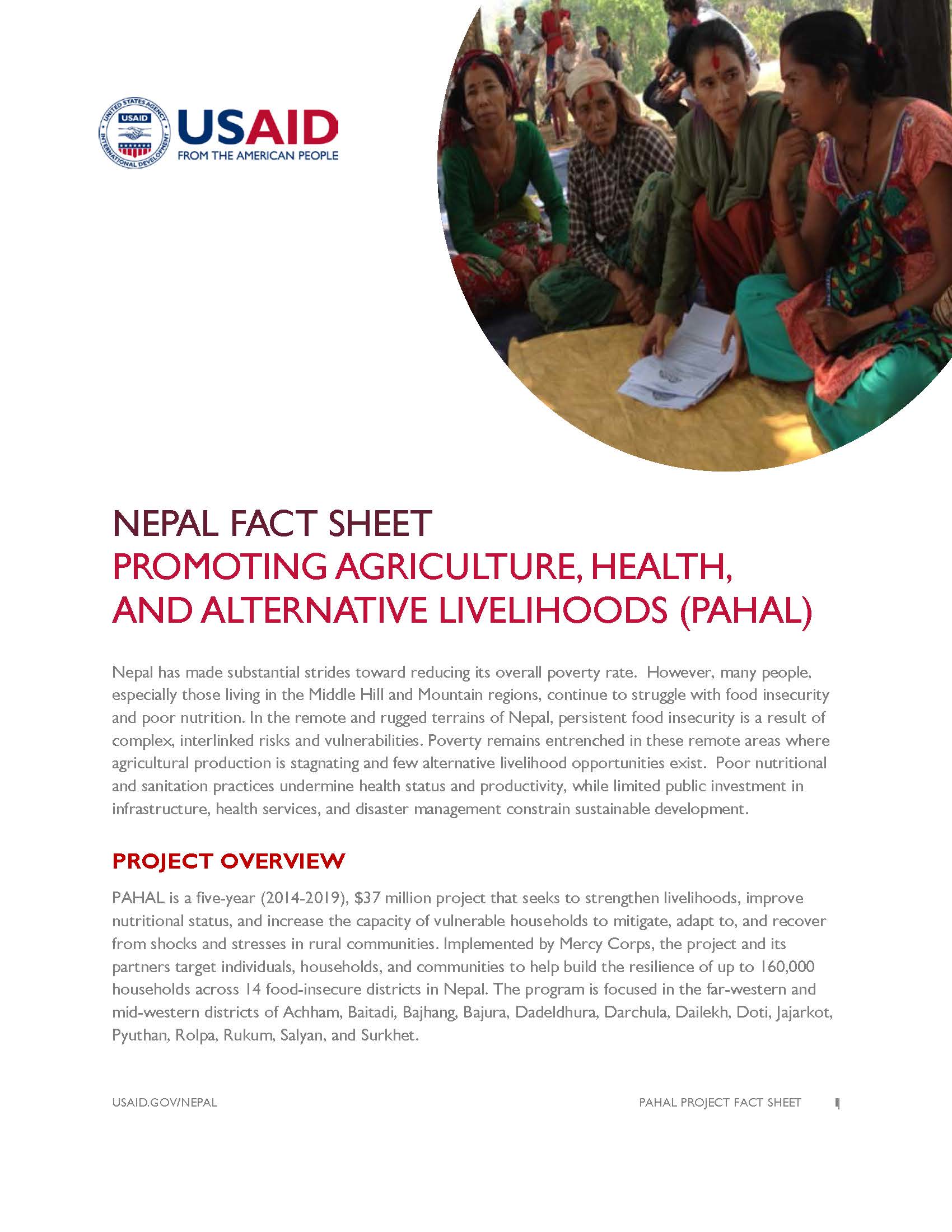Speeches Shim

PROJECT OVERVIEW
PAHAL is a five-year (2014-2019), $37 million project that seeks to strengthen livelihoods, improve nutritional status, and increase the capacity of vulnerable households to mitigate, adapt to, and recover from shocks and stresses in rural communities. Implemented by Mercy Corps, the project and its partners target individuals, households, and communities to help build the resilience of up to 160,000 households across 14 food-insecure districts in Nepal. The program is focused in the far-western and mid-western districts of Achham, Baitadi, Bajhang, Bajura, Dadeldhura, Darchula, Dailekh, Doti, Jajarkot, Pyuthan, Rolpa, Rukum, Salyan, and Surkhet.
PROJECT OBJECTIVES
Mitigating risk of socio-ecological stressors and shocks that reduce local food security
- Increasing resilience to shocks and stressors by diversifying incomes and response strategies, strengthening participatory planning, and empowering communities to link to relevant Government of Nepal resources
- Providing disadvantaged groups with skills and forums necessary to increase their voice and agency
- Incorporating training on disaster risk management and mitigation
- Encouraging the use of water, sanitation, and hygiene facilities, as well as overall improved sanitation practices
Strengthening and diversifying livelihoods for food-insecure populations
- Increasing agricultural production and finding appropriate non-agricultural livelihoods
- Increasing health and nutritional status by improving access to nutritious foods
- Providing training on financial and business skills, and vocational skills
- Improving marginalized groups’ access to and management of productive natural resources
KEY RESULTS
The PAHAL project seeks to achieve the following results over the course of five years:
- Improved knowledge and skills to manage and respond to the social and ecological hazards to food security
- Diversification of agriculture and non-agriculture based livelihoods through access to financial services, financial and business skills, and vocational training
- Increased access to markets for disadvantaged groups
- Improved productivity of crops and livestock as well as access to nutritionally diverse foods
- Adoption of natural resource management and disaster risk reduction practices
- Improved nutrition for pregnant and lactating women, and their children (ages 6-23 months)
- Sustainable access to and appropriate use of safe water and sanitation facilities
- Increased influence over natural resource management for marginalized groups


Comment
Make a general inquiry or suggest an improvement.